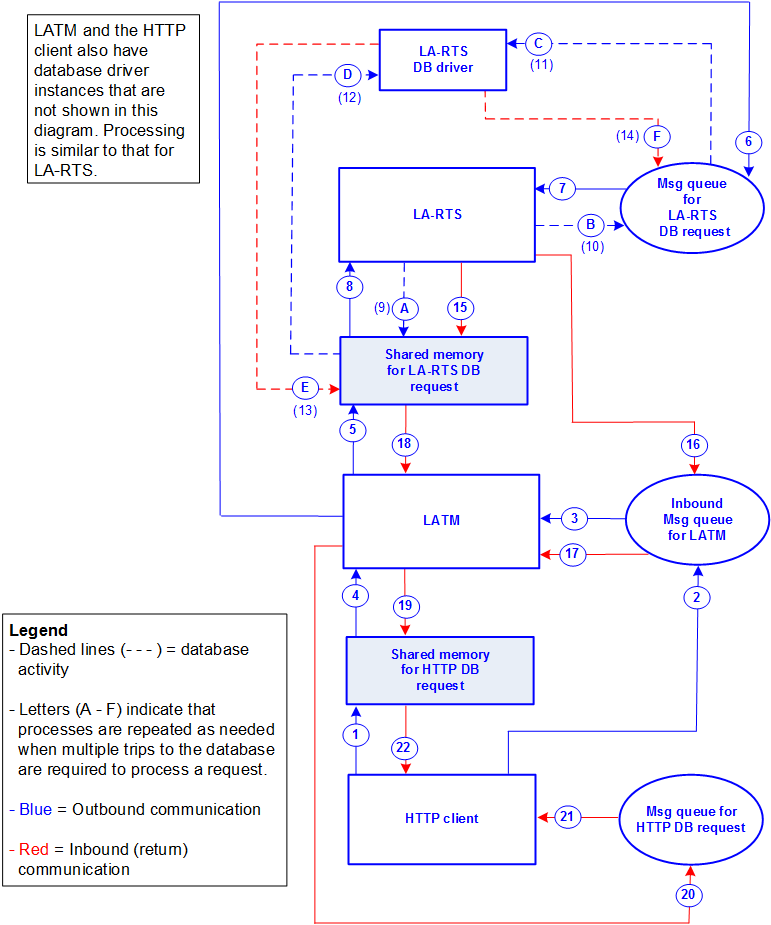Execution Cycle: LATM
This section describes processing of online transactions, defined as transactions that result from direct user interaction with a Lawson form.
The following diagram and table show the steps that occur behind the scenes when a user makes a request for online transaction processing.

| Step # | What is Happening |
|---|---|
| 1 | The HTTP client sends a message containing details about a transaction request to its shared memory segment. |
| 2 | The HTTP client sends a version of the message containing fewer details to LATM's inbound message queue. (The shorter message tells LATM the address of the shared memory contains detailed information.) |
| 3 | LATM's queue sends a message to LATM. |
| 4 | The HTTP client shared memory sends a message to LATM (details about request). |
| 5 | LATM sends a request to LA-RTS’s shared memory segment (details about the request). |
| 6 | LATM sends a request to LA-RTS’s message queue (request for service). |
| 7 | LACOBORTS reads the request in its queue. |
| 8 | LA-RTS reads the message in its shared memory. |
| A (9) | LA-RTS places updated data in its shared memory. |
| B (10) | LA-RTS sends a message to its message queue. |
| C (11) |
LA-RTS' message queue sends a message to its database driver. These steps are labelled A, B, C, D because they may repeat in a single transaction when multiple trips to the database are required. |
| D (12) | LA-RTS' shared memory sends a message to its database driver. |
| E (13) | LA-RTS' database driver sends a message to LA-RTS' shared memory. |
| F (14) | LA-RTS' database driver sends a message to LA-RTS' message queue. |
| 15 | LA-RTS places a message in it its shared memory. |
| 16 | LA-RTS sends a message to LATM's inbound queue. |
| 17 | LATM's inbound queue sends a message to LATM. |
| 18 | LA-RTS shared memory ends a message to LATM. |
| 19 | LATM sends a message to the HTTP request shared memory. |
| 20 | LATM sends a message to the HTTP request message queue. |
| 21 | The HTTP request message queue sends a message to the client. |
| 22 | The HTTP request shared memory sends a "Processing Complete" message to the HTTP client. |